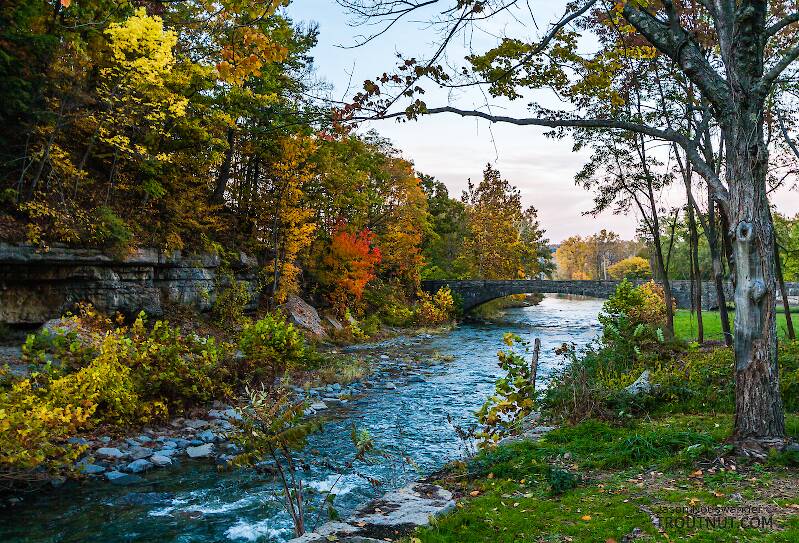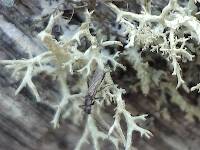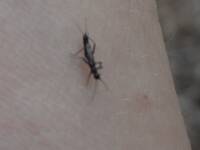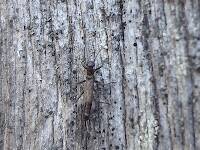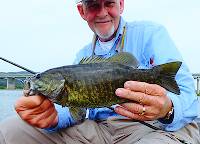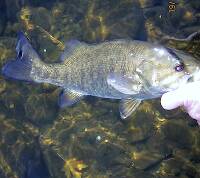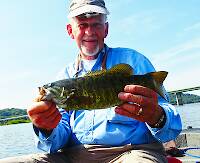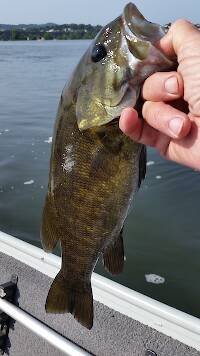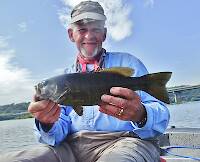
Hex Mayflies
Hexagenia limbata
The famous nocturnal Hex hatch of the Midwest (and a few other lucky locations) stirs to the surface mythically large brown trout that only touch streamers for the rest of the year.
Featured on the forum

With a bit of help from the microscope, this specimen keys clearly and unsurprisingly to Hydropsyche.

Troutnut is a project started in 2003 by salmonid ecologist Jason "Troutnut" Neuswanger to help anglers and
fly tyers unabashedly embrace the entomological side of the sport. Learn more about Troutnut or
support the project for an enhanced experience here.
Freepow on Feb 28, 2008February 28th, 2008, 3:39 pm EST
I am eagerly counting down the hours to the Wisconsin early trout season. I am still a fly fishing rookie (although I am in my 2nd season) so I was wondering if anyone had any good inside tips for winter trout fishing (especially for Wisconsin). I am aware of tips such as:
1. Fish deep...they tend to congregate in deep slower moving waters
2. Fish in the sun spots...when the water warms up (specifically over 38 degrees and I am not sure where I got this number from) the fish become more active.
3. Nymphs and streamers tend to be more suggested than dry flies. Although I will definitely try dry flies because I can't help but hope for a surface hit.
4. Dress and prepare properly so as not to forget things and ruin your day. Use your head...its cold out.
5. Try not to take the fish out of the water if its below freezing...could damage their gills.
So if anyone has anything to add that is not on this list...please do. Thanks.
1. Fish deep...they tend to congregate in deep slower moving waters
2. Fish in the sun spots...when the water warms up (specifically over 38 degrees and I am not sure where I got this number from) the fish become more active.
3. Nymphs and streamers tend to be more suggested than dry flies. Although I will definitely try dry flies because I can't help but hope for a surface hit.
4. Dress and prepare properly so as not to forget things and ruin your day. Use your head...its cold out.
5. Try not to take the fish out of the water if its below freezing...could damage their gills.
So if anyone has anything to add that is not on this list...please do. Thanks.
"I fish...because I suspect that men are going along this way for the last time, and I for one don't want to waste the trip..."
Troutnut on Feb 28, 2008February 28th, 2008, 5:41 pm EST
If you know the good holes, really pound them with nymphs. The fish might be willing to take, but not willing to move very far to do it. You can make a lot of seemingly identical casts before the fly goes right by the big one's nose just right.
Jason Neuswanger, Ph.D.
Troutnut and salmonid ecologist
Troutnut and salmonid ecologist
Martinlf on Feb 29, 2008February 29th, 2008, 12:10 am EST
I'd stick with nymphs or streamers. Try sucker spawn, especially if suckers are spawning in the stream (kinda circular in my reasoning, I know), glo bugs, and bigger muskrat nymphs, walt's worms, and honeybugs of various colors. I like Shenk's white minnow for a winter streamer. Some folks who post here tie them weighted and fish them somewhat like a nymph, slow and deep.
"He spread them a yard and a half. 'And every one that got away is this big.'"
--Fred Chappell
--Fred Chappell
Chris_3g
Posts: 59
Posts: 59
Chris_3g on Feb 29, 2008February 29th, 2008, 2:02 am EST
Freepow,
I'm a relative newcomer to fly-fishing as well (1.5 seasons deep)! The advice from Jason and Louis is great! I've experienced exactly what Jason was talking about, just a few weeks ago. I fished the same hole with a small black woolly bugger and a hare's ear, soft hackle dropper for 1.5 hours, and it wasn't until about 100 +/- 50 casts that I hooked into a nice 16" brown. It was the only trout I got that day, and the only one I've gotten this year, but it was probably one of the hardest fighting fish I've landed to date! I would venture to say that if a hole looks promising, at least during the winter, it probably is; you just have to be persistent enough to prove yourself right!
I will say, however, that you shouldn't count out dries, or more specifically, midges. I know of a few folks I've talked to this winter who have mentioned BIG rises coming for clusters of midges on the water, and it was 35 degrees out! It seems hard for me to believe, but I am certainly going to add midges to my arsenal next time I'm out, just in case. Plus, if you're like a lot of fly-fisherman, you're going to have 1000 flies with you at all times anyway, so what's the harm in a dozen more.
Tight lines.
Chris.
I'm a relative newcomer to fly-fishing as well (1.5 seasons deep)! The advice from Jason and Louis is great! I've experienced exactly what Jason was talking about, just a few weeks ago. I fished the same hole with a small black woolly bugger and a hare's ear, soft hackle dropper for 1.5 hours, and it wasn't until about 100 +/- 50 casts that I hooked into a nice 16" brown. It was the only trout I got that day, and the only one I've gotten this year, but it was probably one of the hardest fighting fish I've landed to date! I would venture to say that if a hole looks promising, at least during the winter, it probably is; you just have to be persistent enough to prove yourself right!
I will say, however, that you shouldn't count out dries, or more specifically, midges. I know of a few folks I've talked to this winter who have mentioned BIG rises coming for clusters of midges on the water, and it was 35 degrees out! It seems hard for me to believe, but I am certainly going to add midges to my arsenal next time I'm out, just in case. Plus, if you're like a lot of fly-fisherman, you're going to have 1000 flies with you at all times anyway, so what's the harm in a dozen more.
Tight lines.
Chris.
Dano on Feb 29, 2008February 29th, 2008, 2:57 am EST
Jason,
There's not really much I can add to the advice given other than when I lived in Michigan, I found Little Brown Trout and Little Brook Trout streamers to be highly effective streamer patterns in the late winter/early spring.
Browns are fairly territorial, so any holes that held Browns last season would be excellent places to start. Patience is key...FWIW.
Dano
There's not really much I can add to the advice given other than when I lived in Michigan, I found Little Brown Trout and Little Brook Trout streamers to be highly effective streamer patterns in the late winter/early spring.
Browns are fairly territorial, so any holes that held Browns last season would be excellent places to start. Patience is key...FWIW.
Dano
Bflat on Apr 16, 2008April 16th, 2008, 3:07 pm EDT
Ironically, the winter days (assuming there's snow on the ground) with air temps much above freezing are often not the best. The snow melt turns the streams so cold the trout's metabolism slows way down (spring creeks are less affected). Air temps a little below freezing are often more productive. These air temps keep the snow melt out, and if there's any relatively warmer ground water entering the stream and/or solar heating of dark stream bottoms, the water has a better chance of being suitable for active (relatively) trout. I'm not saying catching trout in 33 F is impossible, just that the fish has to be hit in the face with food
since it doesn't really need to eat in such cold water. That's one advantage to being cold blooded.
Bob
since it doesn't really need to eat in such cold water. That's one advantage to being cold blooded.
Bob
Bflat
Quick Reply
Related Discussions
Topic
Replies
Last Reply
3
Jan 2, 2018
by Jmd123
by Jmd123
0
Apr 7, 2011
by PaulRoberts
by PaulRoberts

